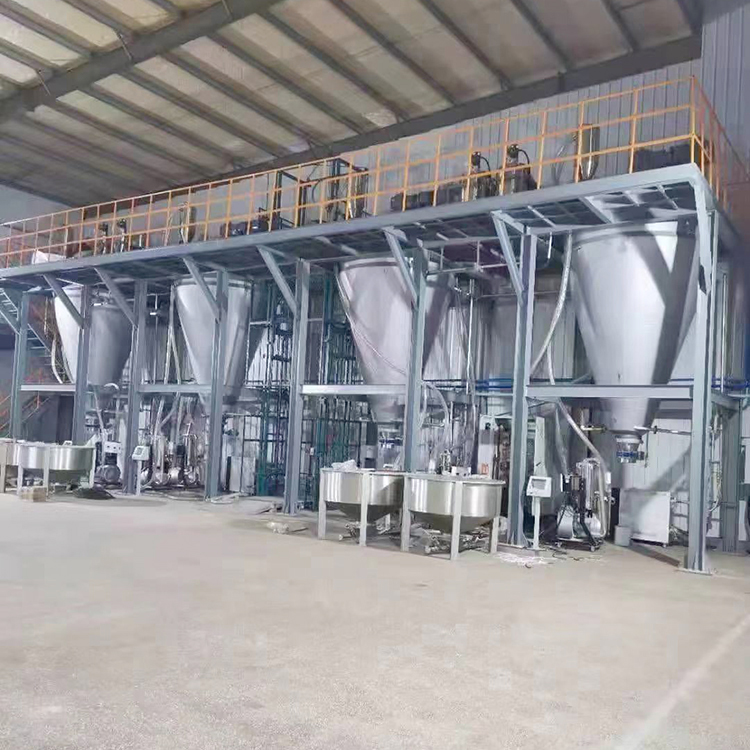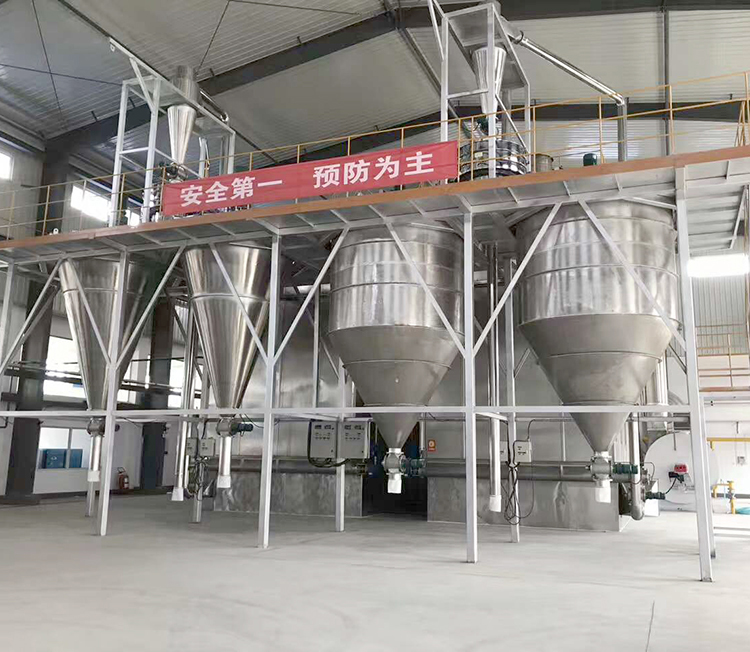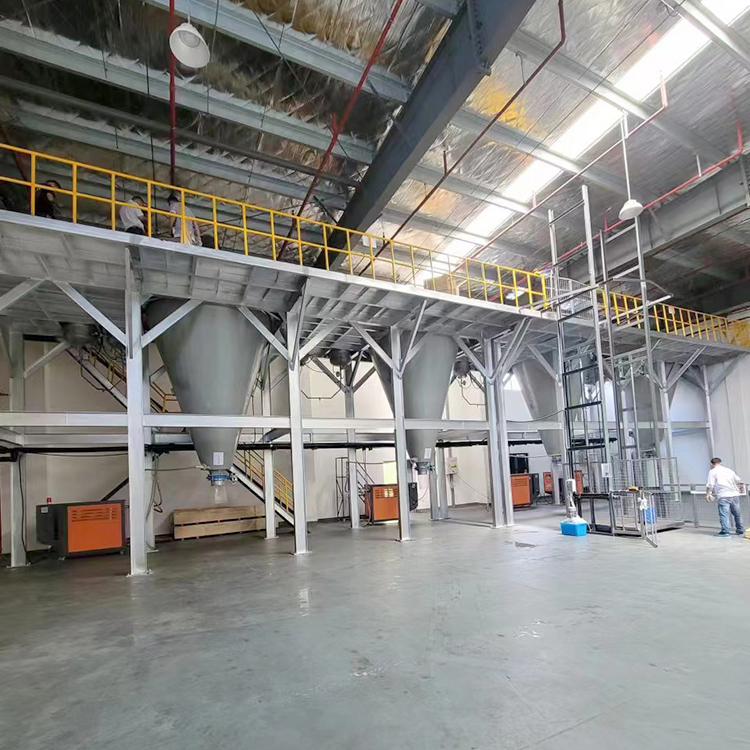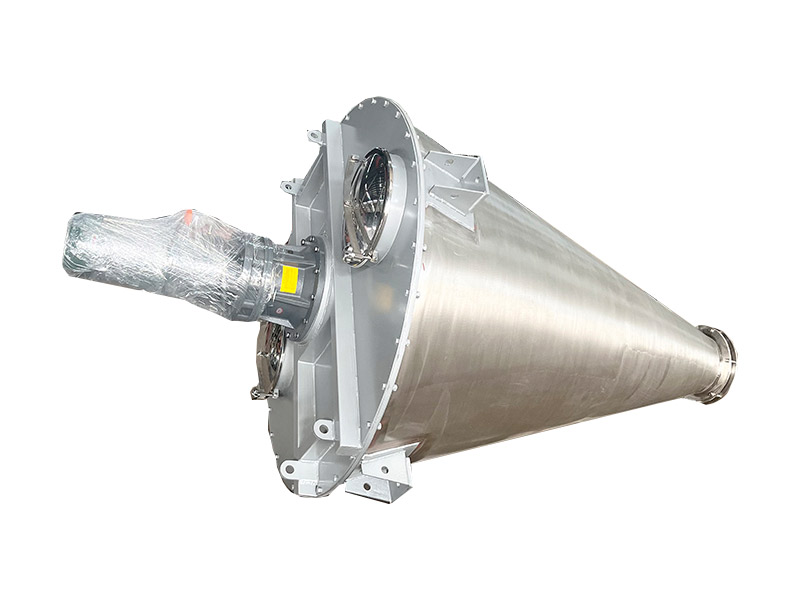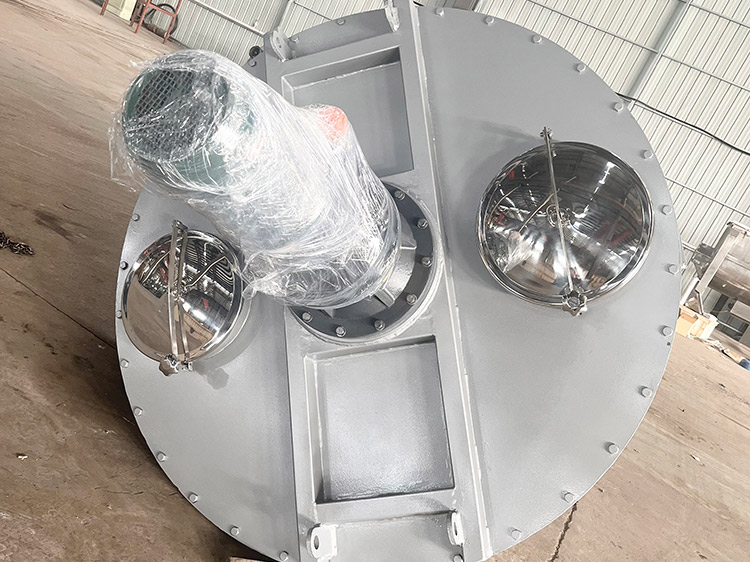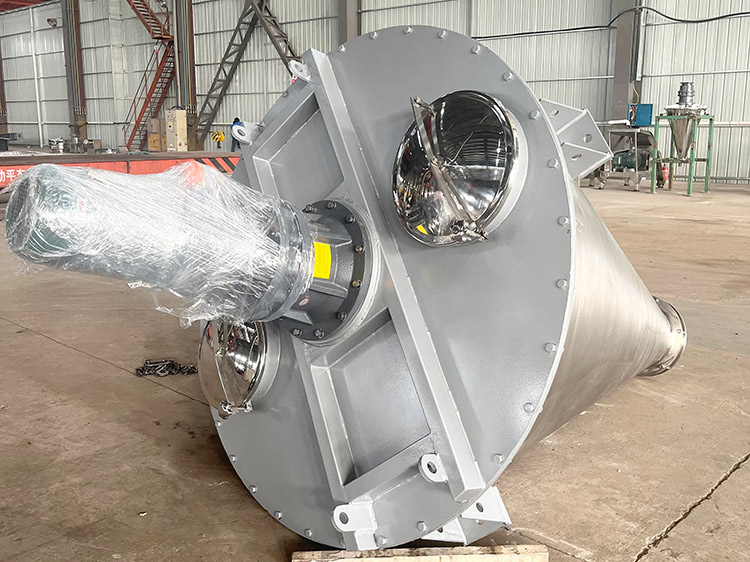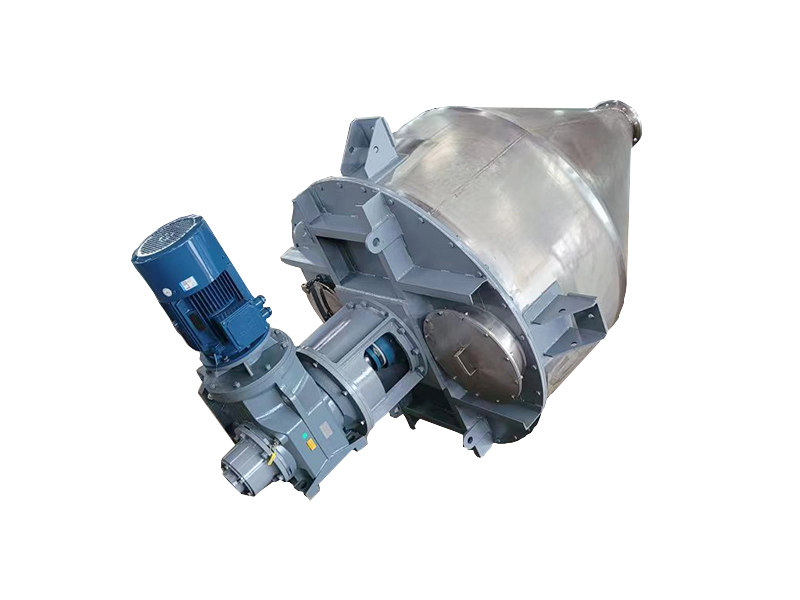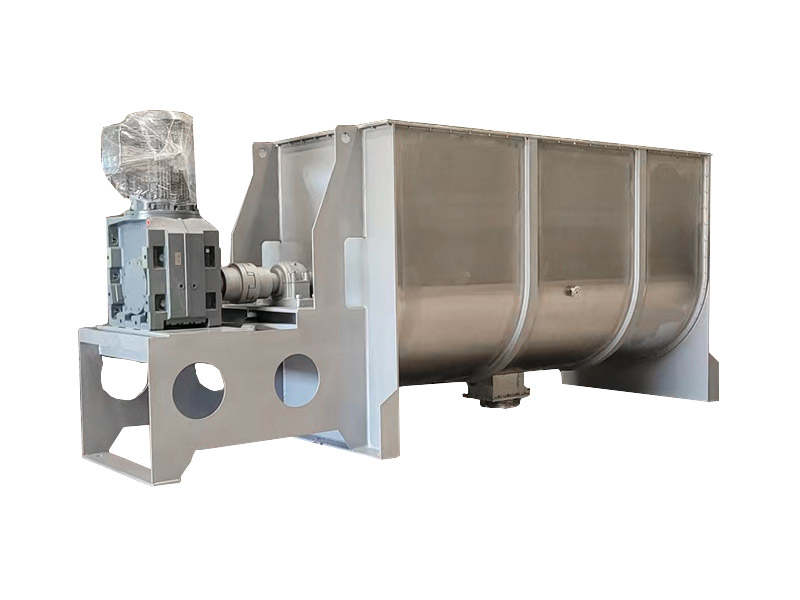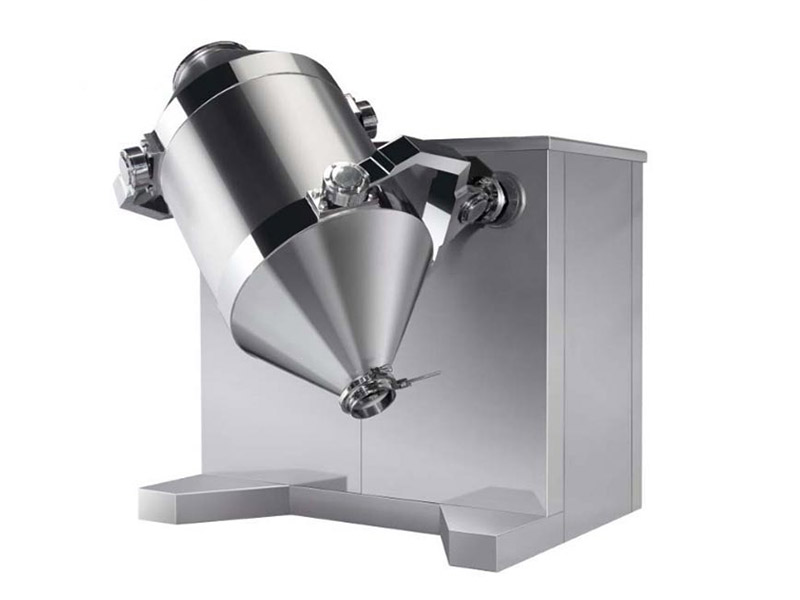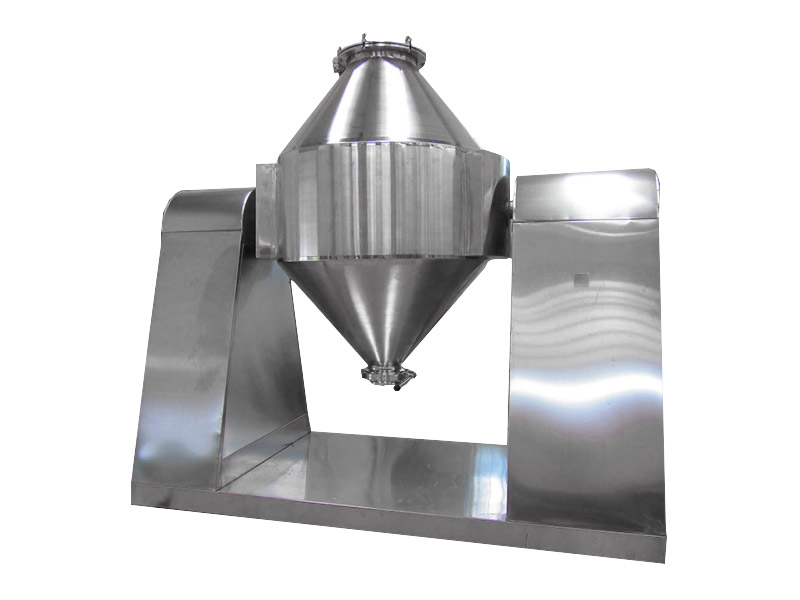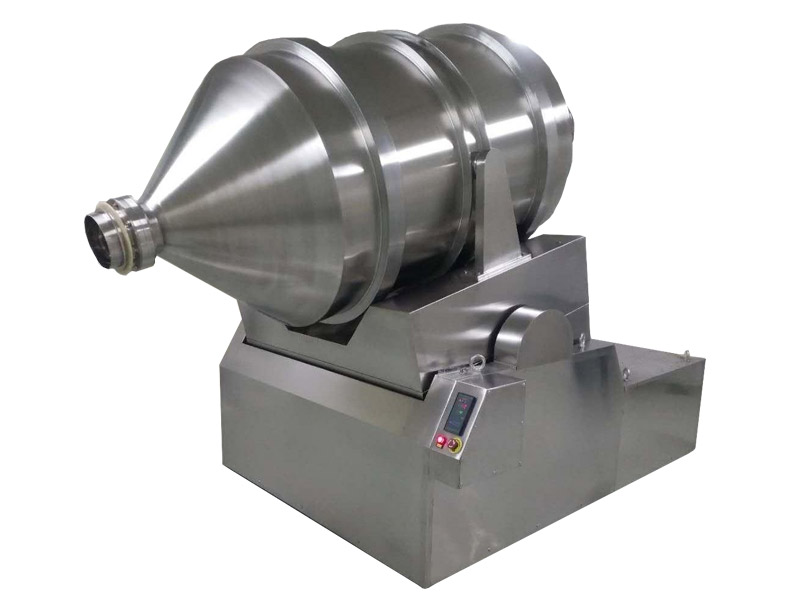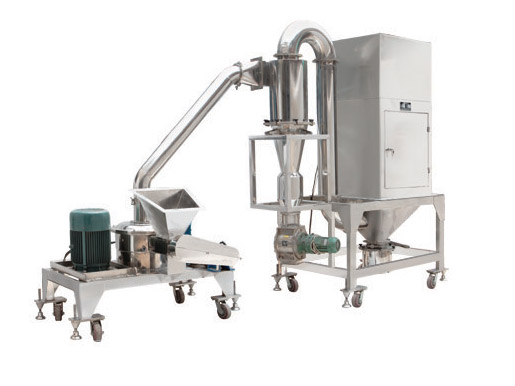Details
Mixing form

Product Overview
The ZHJ series conical mixer is a new type of high-efficiency and high-precision mixing equipment composed of a long spiral or two (three) asymmetric spiral agitators. They not only rotate around their own axis (self rotation), but also use the rotation of the cantilever to orbit the central axis of the conical container and perform planetary motion (revolution) along the inner wall of the conical container; The device repeatedly lifts the material through the rotation of the screw, generating composite movements such as shear, convection, and diffusion within the cone, thereby achieving uniform mixing. This machine can also produce various special forms such as heating, cooling, positive pressure, vacuum, etc. according to user requirements.
A、 Mixing effect
The standard conical mixer has two mixing screws, one long and one short. In practical applications, single (one long screw) or three (two short and one long symmetrically arranged) screws can be used according to the equipment specifications.
B、 Cooling and Heating
Various types of jackets can be added outside the mixer cylinder to cool or heat the material by injecting cold and hot media into the jacket; Cooling is usually pumped into industrial water, while heating can be done by introducing steam or thermal oil.
C、 Add liquid and mix
Connect the spray pipe to the intermediate shaft position of the mixer and connect it to the atomizing nozzle to achieve liquid addition and mixing; By selecting specific materials, acid and alkaline liquids can be added for powder liquid mixing.
D、 Pressure resistant type
The cylinder cover can be made into a head type, and the cylinder body can be thickened to withstand positive or negative pressure, while reducing residue for easy cleaning. This setting is often used when the mixer cylinder body needs to withstand pressure.
E、 Feeding method
It can be manually fed, fed by vacuum feeder, and fed by conveyor machinery. In specific processes, the mixer cylinder can be made into a negative pressure chamber, and a hose can be used to suck dry materials with good fluidity into the mixing chamber for mixing, which can avoid residue and pollution in the material feeding process.
Product features and applications
The advantages of this machine are wide applicability, large capacity, no residue in discharge, and energy saving. Cone mixer is suitable for mixing powders with powders, particles with powders, and powders with small amounts of liquids. It is widely used in industries such as food, chemical, dye, pigment, pesticide, veterinary medicine, medicine, construction, new energy, metal, electronics, ceramics, etc. This machine has a wide adaptability to mixtures, does not overheat heat sensitive materials, and can maintain the integrity of particles as much as possible. It has good effects on the mixing of coarse powder, fine powder, fiber or sheet materials, and does not produce layer separation when mixing materials with significant differences in weight and particle size. It also has good adaptability to the mixing of coarse, fine and ultrafine particles (nanometer scale).
Specification parameters
1. Determine the volume of materials to be mixed in each batch, ranging from 0.1 to 20 cubic meters, and select equipment of the corresponding specifications.
2. Select equipment manufacturing materials, which are divided into parts that come into contact with the material, parts that do not come into contact with the material, and other components of the equipment that maintain their original materials. The material is determined based on factors such as material properties, working conditions, and hygiene levels. Commonly, carbon steel and 304/316L/321 stainless steel materials are selected and surface treatment requirements are determined according to the requirements.
3. Determine the driving capability of the configuration based on the specific gravity, fluidity, and other properties of the material, as well as the start-up standards. Startup standards are divided into overloaded startup and unloaded startup.
4. According to the actual process situation, add auxiliary functional components such as liquid spraying, heating/cooling, etc.
5. Design the opening requirements for equipment, such as feeding ports, cleaning ports, exhaust holes, etc
6. Select the discharge mode and driving method, including manual, pneumatic, and electric
Important reminder: Equipment selection is a crucial step, and detailed information about materials and process arrangements should be provided as much as possible so that our professional personnel can provide you with high-quality technical services.
Case diagram
